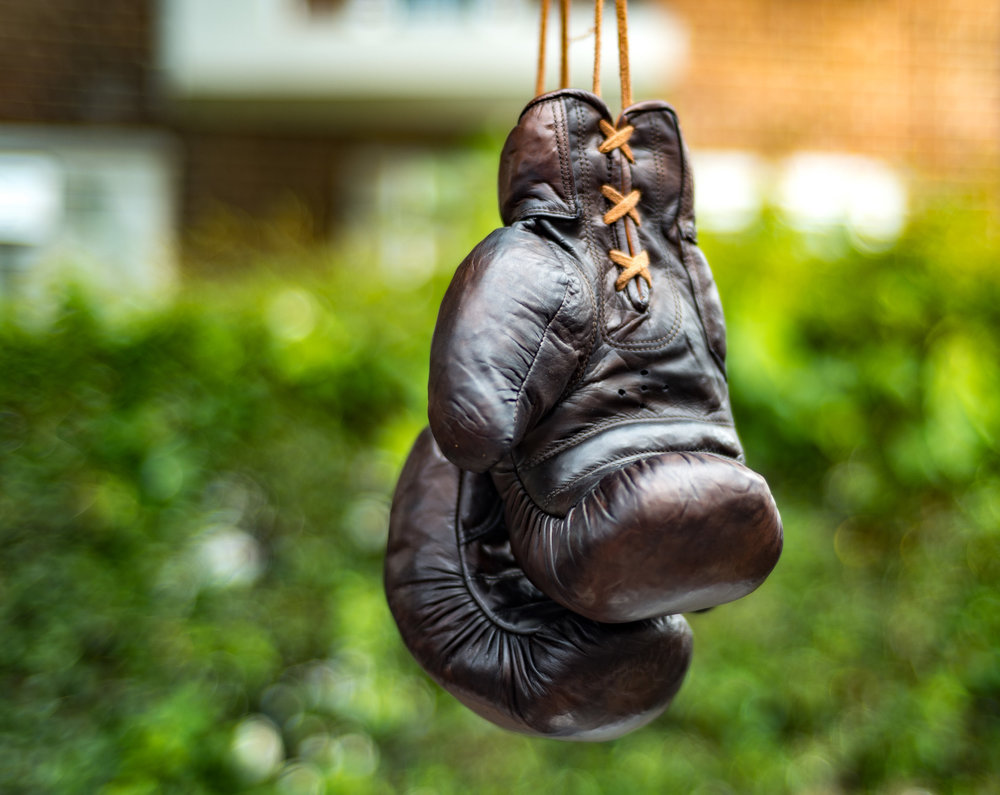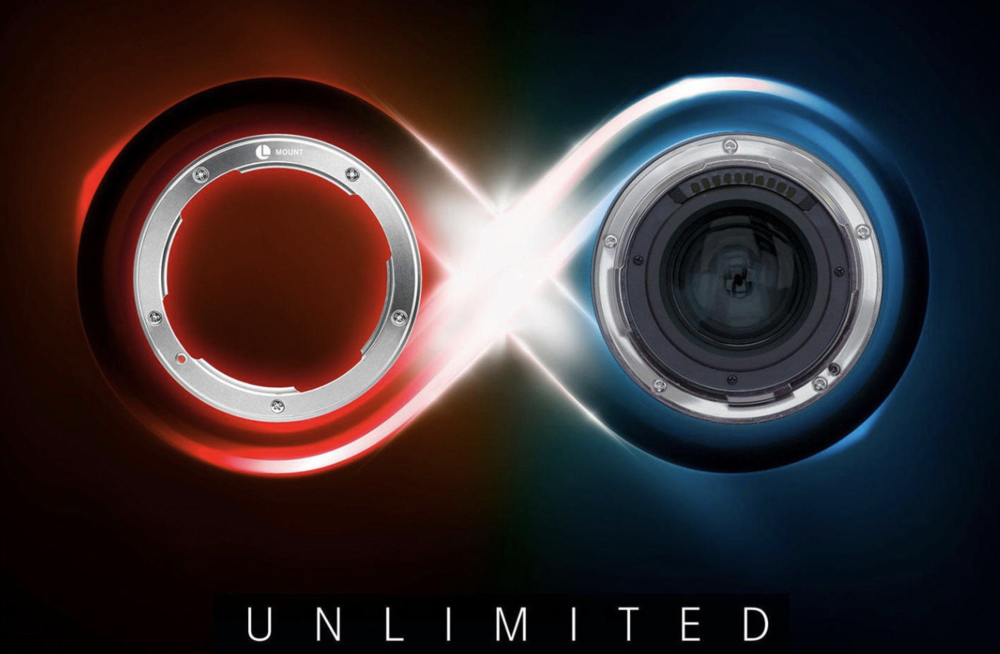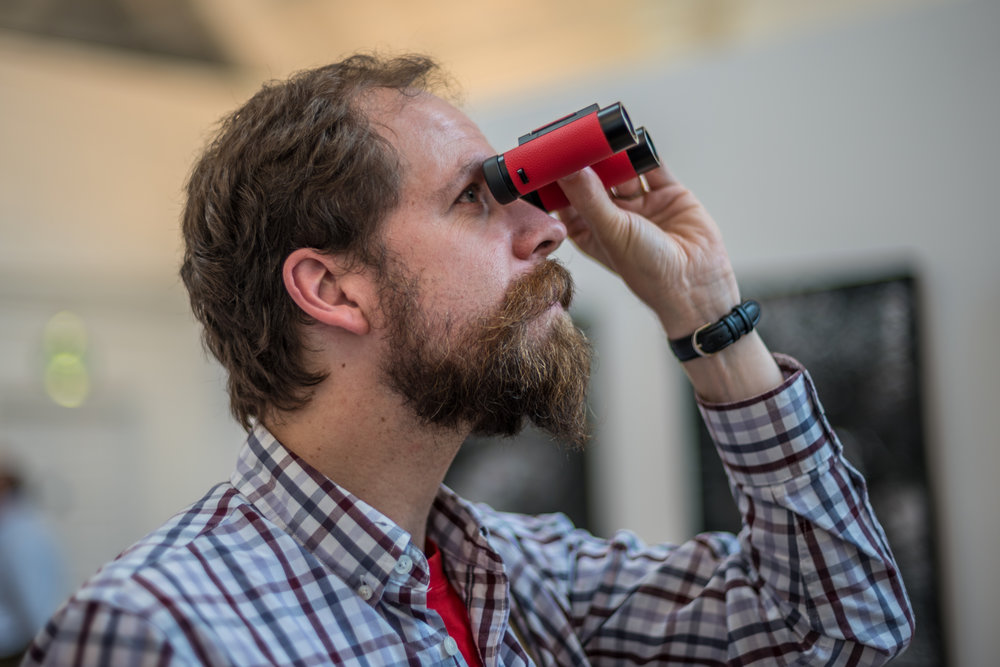
What a day Tuesday turned out to be. I had set aside the full afternoon to respond to the Cologne press conferences. But I hadn’t anticipated having quite so much to write about, nor quite so much to become enthusiastic about.
The L-Mount Alliance is undoubtedly the big news for the photographic industry, and even more so for little old Macfilos since it strikes at the very heart of our interests.

Wowee
Wow, I thought. I am almost as excited as Steve Huff about the new alliance. Leica and Panasonic have pulled off a masterstroke here. For Panasonic, especially, the alliance is a liberating move. For Leica, it ensures the continuance (and, we hope, greatness) of the L-Mount. Up to now, despite all the positive things said about the SL and CL, the mount’s future was by no means assured in the rapidly changing market.
For Panasonic, the liberation comes in allowing a natural progression from micro four-thirds. It is now able to hedge its bets instead of being seen as a one-trick pony. Ten years ago, in the days of smaller and much more expensive sensors, micro four-thirds made a lot of sense. It still does, to an extent, but it no longer has the allure that it once did. Larger sensors offer greater dynamic range, better ISO performance and, of course, the fashionable narrower depth of field.

And micro four-thirds no longer has a considerable price advantage as the cost of full frame (and, even, medium format sensors) has plummeted. As the basis of a system, it still benefits from relatively small lenses which reduce the size of the system overall. But even m4/3 lenses have been growing in proportion as they become more professional in aspiration. Take a G9 with a 42.5mm Nocticron and hood, and it no longer looks like an m4/3 rig; it more the size of an a7III with a similar lens.
There is a still a place for micro four thirds, particularly in video, which Panasonic does so well, and for those wishing to use extremely long lenses without the bulk of full-frame equivalents. I have no doubt that as a system it still has a bright future. But the sands are shifting.
Panasonic has done well to leapfrog APS-C with the introduction of the new cameras, although the company now has the option to enter that market as well, using the same L-mount that Leica has employed on the T, TL and CL.
Cool light of day
After 24 hours I am still enthusiastic about the prospects for this collaboration between Leica, Panasonic and Sigma. I’ve even been wondering if other companies might jump on the bandwagon — notably Olympus which looks very much out in the cold following this week’s developments.

Reader Steve P rightly points out that I was overly enthusiastic in maintaining that any full-frame camera made by Panasonic would work as well with manual M lenses as do the SL and CL. He is right to urge caution, but my hope is the Panasonic, thanks to Leica’s help, will avoid some of the problems we have seen when using M lenses on non-Leica mirrorless cameras.
Besides, I had assumed that any Panasonic full-frame cameras would also appear under the Leica brand, as with the C-Lux, D-Lux and V-Lux. But after reading that the new Panasonic S cameras are larger than the Sony a7 or Nikon Z6/7, I am not so sure. It is impossible to tell from pictures, especially the carefully cropped images supplied by Panasonic, but those who have seen the prototype say it is nearly as big as the Leica SL.

There have been rumours of a new, smaller full-frame Leica to complement the SL and I had assumed this would be the rebadged Panasonic. I am no longer sure. It could be an entirely new in-house design. However, one snag to the introduction of such a camera, the size, weight and cost of SL lenses, is now removed because lenses from Panasonic and, presumably, Sigma, could in future offer cheaper and lighter opportunities to go with any smaller Leica.
There is now everything to play for, and I am looking forward to exciting developments. For anyone owning the SL or TL/CL, the prospects just became a whole lot brighter.
For me, the news has led to some thoughts of rationalisation in my systems, and I will be writing separately about my plans as I decide what to include in my stable. The L-Alliance changes just about everything. Perish the thought, but I might even buy another SL (for the third time)!
____________
-
Subscribe to Macfilos for free updates on articles as they are published
-
Want to comment on this article but having problems?
Apologies if you are still getting the “Object object” bug when attempting to post comments. This is out of my control and I am waiting for Squarespace to come up with a fix. In the meantime, please ignore it but make sure to put your name at the bottom of your comment so we know who it is from.

This is great news. I have had a Leica CL since January and love it. But it took nearly two months of waiting to get a 18-56 zoom and I have had a 55-135 on order since March! The only fault I can find with the CL is the time it takes to get lenses. I am using my M lenses with the excellent adapter but not for travelling light when I prefer to take two zooms.
Tony
This surprises me. I had no idea that these lenses were in short supply. They are all good, however, especially the 55-135 which I don’t get to use as much as I would like.
Yes Fuji is massive company, an article by a Mr Cooke FStoppers shows the biggest share of Fuji camera share is from Instamax cameras, not x or g series, which is why I think Fuji is happy and doesn’t want to compete in FX, I have nothing bad to say about Fuji just trying to figure out what they are going to do when their ‘Polaroid’ period ends.
The synergy of these three hopefully will assure their survival and attain a bigger market share, now Olympus and Fuji have to pay attention, or they will be left as the two unorphaned dwarfs.
Fuji is a massive company and cameras are but about 15% of their output. Olympus has other irons in the fire, but could be vulnerable on the camera front. Sony is, however, a giant, not on the camera front so much, but in all kinds of electronics and media/entertainment interests. Nikon is not as diversified as some of the others and could also be vulnerable. It is, however, an iconic brand and there were rumours about a year ago that the Japanese Government had asked Fujifilm and others to step in with a rescue bid. This did not happen.
William
Jono Slack has been dropping non too subtle hints on the Leica Forum that the SL2 will be quite different to the two Lumix cameras announced yesterday. In other words, it will not be a re-badged Lumix. This is presumably part of Leica’s need for a separate identity going forward with Leica taking the high ground and with the middle ground being left for Lumix which will service the volume market. One difficult aspect to manage will be the fact that modern cameras are largely about the electronic bits which, presumably, will be common to a large degree. The main issue for Leica, however, will be whether Leica camera owners will use Leica lenses or ‘nearly as good’ but cheaper Sigma or Lumix lenses with the same L mount. Interesting times ahead. I will be a spectator to this until I actually buy an L lenses. All of my very many Leica lenses are either LTM or M mount.
William
I could see the new SL2 being based on the S1(R), but Leica installing microlenses on the sensor (for the heritage lenses) and their own image processing software.
I’ve heard that the new rumoured SL mini will not be a rebadging of the Panasonic but a genuine smaller Leica. It makes more sense now we know there will soon be a range of smaller lenses to go with it. Some of them could even be branded Leica, as with the Leica DG Lumix lenses.